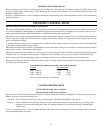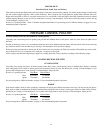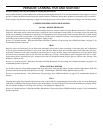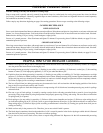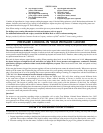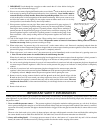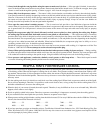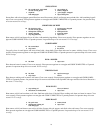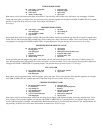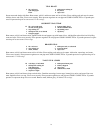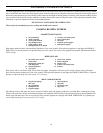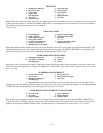
22
3. IMPORTANT: Look through the vent pipe to make certain that it is clear before closing the
cover. See safety information on page 23.
4. Place cover on canner, aligning the V mark on the cover with the
V
mark on the body handle and
lock securely by turning in the direction indicated to close (clockwise). Cover handles must be
centered directly over body handles. Do not force beyond this position. If the cover is difficult
to lock at this point, it is due to expansion of the canner from heating. If this occurs, remove cover
and allow the canner to cool slightly. Do not replace canner on burner until cover is in its fully
closed position (cover handles directly above body handles).
5. Place pressure regulator on vent pipe. Heat canner until pressure dial gauge registers 15
pounds pressure. A relatively high heat setting is necessary for most range burners. Cooking
time begins when pressure gauge registers 15 pounds pressure. Adjust heat to maintain 15
pounds pressure on the pressure dial gauge to prevent excess steam from escaping. (If the
pressure regulator begins to rock before 15 pounds pressure is reached on the gauge, lower
heat to maintain a slow, steady rocking motion of the pressure regulator and cook at this
pressure.)
6. Cook for the length of time specified in recipe. When cooking time is completed, turn off
gas burner or remove canner from electric burner. Lift pressure canner to remove it from burner. Sliding cookware can leave
scratches on stovetop. Reduce pressure according to recipe.
7A. When recipe states “let pressure drop of its own accord”, set the canner aside to cool. Pressure is completely reduced when the
air vent/cover lock and overpressure plug have dropped and no steam escapes when the pressure regulator is tilted. Do not use the
pressure dial gauge as an indicator of when pressure is completely reduced.
7B. When recipe states “cool canner at once”, the canner must be cooled immediately under a water faucet or by pouring water over
it. Note: Do not set hot canner in a molded sink as it could damage the sink.
When the air vent/cover lock and overpressure plug have dropped and no steam escapes when the regulator is tilted, pressure is
completely reduced. Do not use the pressure dial gauge as an indicator of when pressure is completely reduced.
7C. Or, cool at once by placing the canner in a pan of cold water until the air vent/cover lock and overpressure plug have dropped and
no steam escapes when the regulator is tilted. Do not use the pressure dial gauge as an indicator of when pressure is completely
reduced.
8. After the air vent/cover lock and overpressure plug have dropped and no steam escapes when the
regulator is tilted, remove the pressure regulator. Do not remove the pressure regulator until pressure
is completely reduced. Always remove the pressure regulator before opening the cover.
9. Remove cover by turning counter-clockwise until the
V
mark on the body handle aligns with the
V mark on the cover. Lift cover toward you to keep steam away from you. If the cover is locked or
turns hard after the regulator is removed, there may still be some pressure in the canner. The cover
should not be forced off. Cool the canner until the body is cool enough for the cover to be removed
easily.
10. Remove food and serve.
iMPoRTanT safeTY infoRMaTion
Cooking under pressure enables you to prepare food both quickly and deliciously. If used properly, your pressure canner is one of the
safest appliances in your kitchen. To ensure safe operation, make sure you always observe the following simple rules whenever you use
the pressure canner:
1. Never overfill the pressure canner. — The pressure regulator is designed to maintain cooking pressures at a safe level. It relieves
excess pressure through the vent pipe as it rocks back and forth. Many foods tend to expand when cooked. If the canner is overfilled,
expansion of food may cause the vent pipe to become blocked or clogged. If the vent pipe becomes blocked, it cannot relieve excess
pressure.
There are a few foods such as rice, grains, dry beans and peas, and soups which expand so much or foam and froth while cooking that
the canner should never be filled more than half full. For other foods, never fill the canner more than two-thirds full.
2. Always add cooking liquid. — If an empty pressure canner is left on a hot burner or if a canner boils dry and is left on a heated
burner, the canner will overheat excessively causing possible discoloration and/or warping of the canner.
Align the V mark on the cover with the
V
mark on the body handle.




